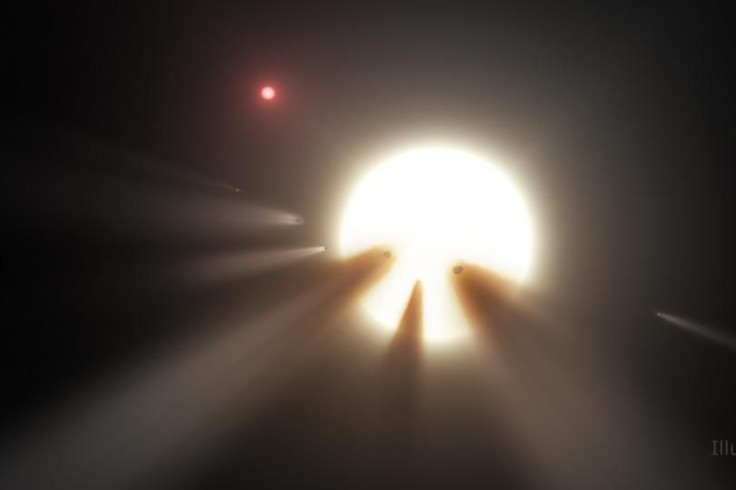‘Alien Megastructure’ Star Update: Kepler Data Analysis Confirms Long-Term Dimming Of Tabby’s Star

KIC 8462852 — a star that has, over the past year, gripped the imagination of astronomers like no other. The source of this intrigue? A series of dramatic and erratic dimming events that can’t be explained by any phenomenon known to humans.
A new study, accepted for publication in the Astrophysical Journal, has only added to the enigma surrounding what has been called the “most mysterious star in our galaxy.”
The study, co-authored by Caltech astronomer Ben Montet and Joshua Simon from the Carnegie Institute, provides a detailed analysis of photometric data of the star gathered by the Kepler space telescope between 2009 and 2013. In it, they reveal that the star was definitely dimming at a rate that defies explanation over the four years Kepler monitored it. For instance, in the first 1,000 days of Kepler’s observations, the star’s luminosity dipped by roughly 0.3 percent per year. Then, the star’s brightness dipped by a staggering 2 percent in a span of just six months.
The researchers also compared this data with that obtained from Kepler’s observations of 500 similar stars, and found that none exhibited such a dramatic dimming, or a total change in brightness of nearly 3 percent.
“The steady brightness change in KIC 8462852 is pretty astounding,” Montet said in a statement released Monday. “Our highly accurate measurements over four years demonstrate that the star really is getting fainter with time. It is unprecedented for this type of star to slowly fade for years, and we don’t see anything else like it in the Kepler data.”

KIC 8462852 is located over 1,400 light-years from Earth between the constellations Cygnus and Lyra. Last fall, a team of scientists led by Tabetha Boyajian from Yale University, who lends the star its informal name — “Tabby’s star” — reported that the object was not behaving as it should. Based on observations conducted using NASA's Kepler Space Telescope between 2009 and 2013, the team witnessed two unusual incidents, one each in 2011 and 2013, when the star's light dimmed in dramatic, never-before-seen ways.
This dimming indicated that something had passed in front of the star. At the time, a swarm of comets was proposed as the most likely explanation.
However, since then, several studies have argued that it is highly unlikely that a swarm of cometary could have caused the massive dip in the star’s luminosity. Other independent searches, especially tailored to detect alien radio signals and laser pulses, also drew a blank — disappointing proponents of the more outlandish theories that sought to explain the star's behavior as something caused by the presence of an “alien megastructure” around it.
Although the new study seems to rule out all the possible explanations that have been put forward so far — a swarm of comets, planetary fragments, or a distorted star — it does not mean the dimming is caused by an alien megastructure. It just means we still don’t have an explanation for what is causing the star’s light pattern to dip erratically.
“It’s a big challenge to come up with a good explanation,” Montet said. “But these observations will provide an important clue to solving the mystery of KIC 8462852.”
For now, though, all explanations are equally flawed — be it a swarm of comets or debris, interstellar dust, or a gigantic alien Dyson sphere.
© Copyright IBTimes 2025. All rights reserved.






















